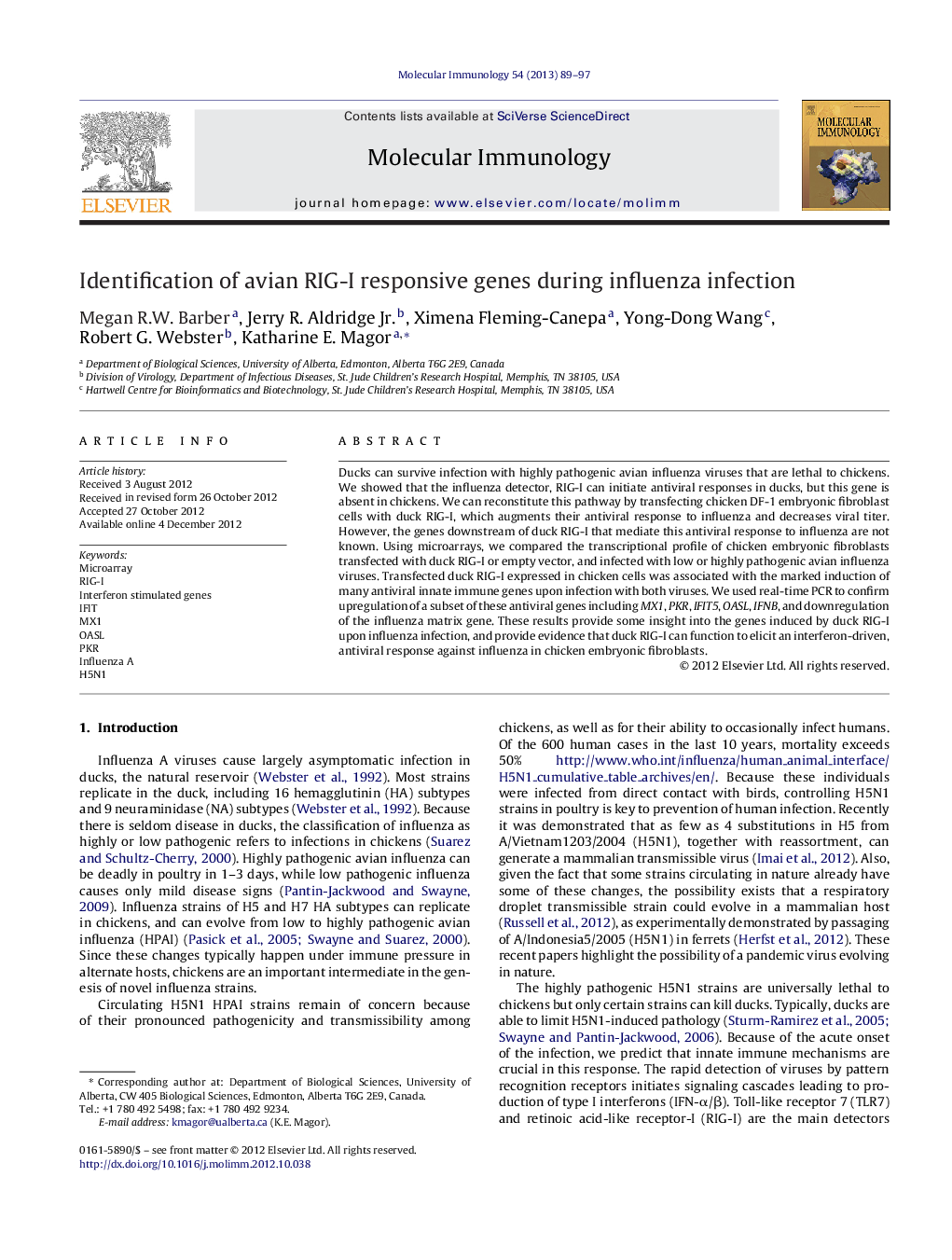| Article ID | Journal | Published Year | Pages | File Type |
|---|---|---|---|---|
| 5917374 | Molecular Immunology | 2013 | 9 Pages |
Ducks can survive infection with highly pathogenic avian influenza viruses that are lethal to chickens. We showed that the influenza detector, RIG-I can initiate antiviral responses in ducks, but this gene is absent in chickens. We can reconstitute this pathway by transfecting chicken DF-1 embryonic fibroblast cells with duck RIG-I, which augments their antiviral response to influenza and decreases viral titer. However, the genes downstream of duck RIG-I that mediate this antiviral response to influenza are not known. Using microarrays, we compared the transcriptional profile of chicken embryonic fibroblasts transfected with duck RIG-I or empty vector, and infected with low or highly pathogenic avian influenza viruses. Transfected duck RIG-I expressed in chicken cells was associated with the marked induction of many antiviral innate immune genes upon infection with both viruses. We used real-time PCR to confirm upregulation of a subset of these antiviral genes including MX1, PKR, IFIT5, OASL, IFNB, and downregulation of the influenza matrix gene. These results provide some insight into the genes induced by duck RIG-I upon influenza infection, and provide evidence that duck RIG-I can function to elicit an interferon-driven, antiviral response against influenza in chicken embryonic fibroblasts.
⺠44K Agilent microarray analyses of chicken DF-1 cells with duck RIG-I or empty vector. ⺠Transcriptome of H5N2 infected cells with duck RIG-I or empty vector. ⺠Transcriptome of H5N1 infected cells with duck RIG-I or empty vector. ⺠Identification of genes augmented in expression by duck RIG-I. ⺠Quantitative real-time PCR confirms upregulation of key innate immune genes.
